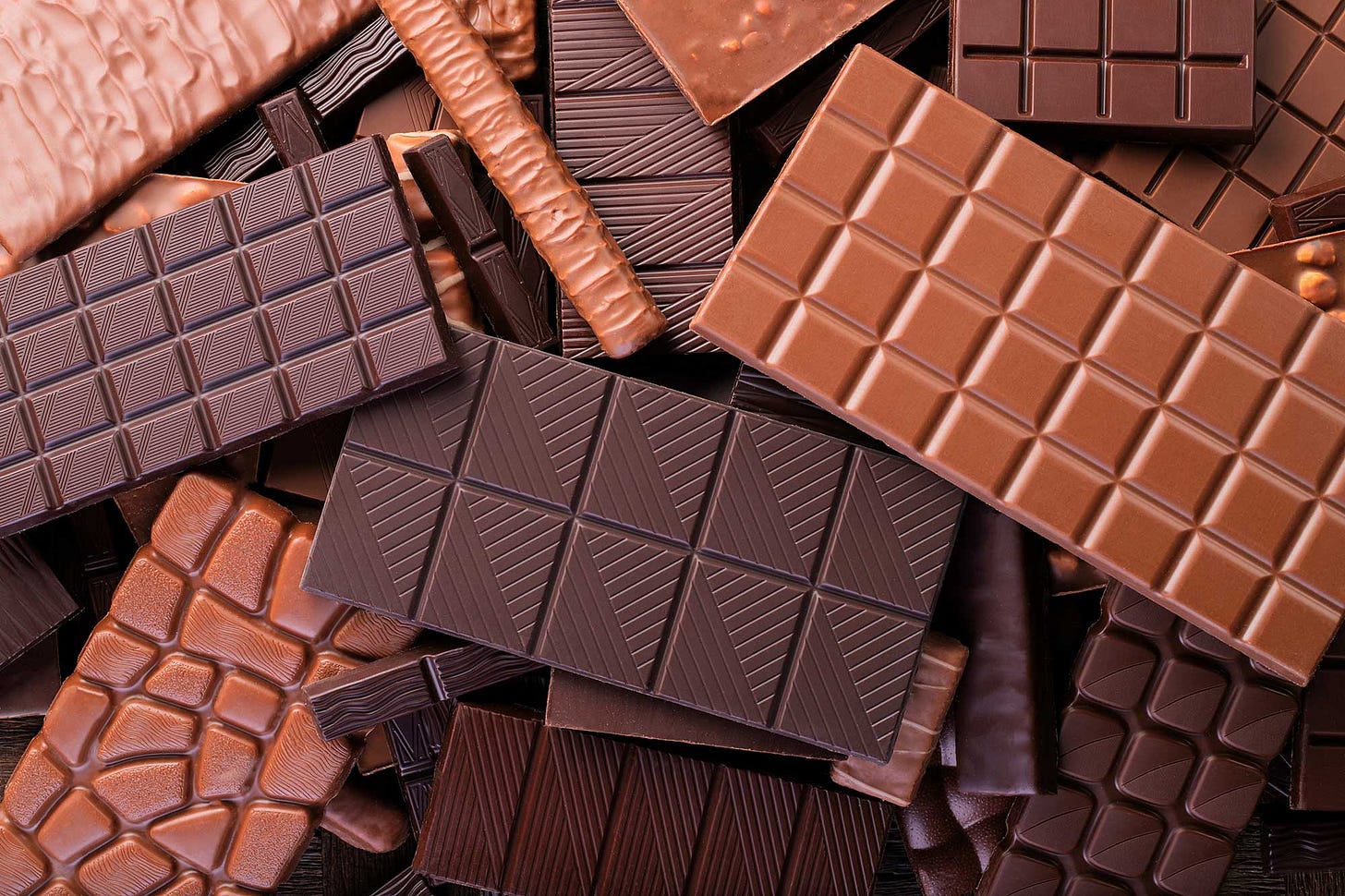How to spot sustainable chocolate
When browsing for treats this holiday season, know some goodies may be sweeter to the planet than others
Welcome back to Cool Beans, food-loving friends. Today we’re examining the environmental impact of one of life’s great pleasures, chocolate. Before you close this email and run to the nearest peanut butter cup: No, we’re not going to take away your candy. What we will do is dole out the facts that will help you choose your hunks of rich, creamy happiness wisely.

We won’t sugarcoat this: Chocolate is delicious, but environmentally it’s pretty unpalatable. Producing a kilo of dark chocolate creates 46.7 kilos of greenhouse gas emissions. That’s second only to beef (which, by the way, is more than double that at 99.5 kilos), according to the go-to analysis of foods’ impact published in the journal Science. Making a kilo of sugar, for a sweeter comparison, generates 3.2 kilos. Americans eat roughly 20 pounds of chocolate per person a year, which is less than beef or chicken, but it still adds up.
Why the jumbo-sized footprint? More than half of it traces back to deforestation; vast swaths of land are cleared to accommodate cacao farms. Packaging and transportation also contribute to emissions.
But according to a 2018 study in Food Research International, there is variation among different kinds of chocolate. The authors compared the three most popular types sold in the U.K.: bars of solid chocolate, wrapped candy bars like Mars and Snickers, and bags of individually wrapped minis. “We found that the worst for the environment were the chocolates in bags, due to the additional amount of packaging used to wrap each chocolate in the bag,” says co-author Adisa Azapagic, professor of sustainable chemical engineering at the University of Manchester.
What about milk versus dark? “We also found that the ingredients used for the production of milk chocolate have a significant impact on the environment,” says Azapagic. But there are caveats. The addition of milk powder, palm oil, and sugar increase a treat’s footprint, but dark chocolate requires more cocoa, which means more land use and deforestation.
And the drawbacks don’t end there. Azapagic’s study found that it takes 1,000 liters of water to make a single bar. Another issue is that 60% of the cocoa bought by the world’s top chocolate brands comes from Ghana and the Ivory Coast, where most workers don’t make a living wage and forced child labor is common practice.
So what’s a chocoholic to do?
We promised that we weren’t going to take away your candy, and we meant it. No chocolate is perfectly planet-friendly, but there are ways to spot treats that will do less to yuck your yum. Here’s what to keep in mind when you’re browsing the candy aisle:




